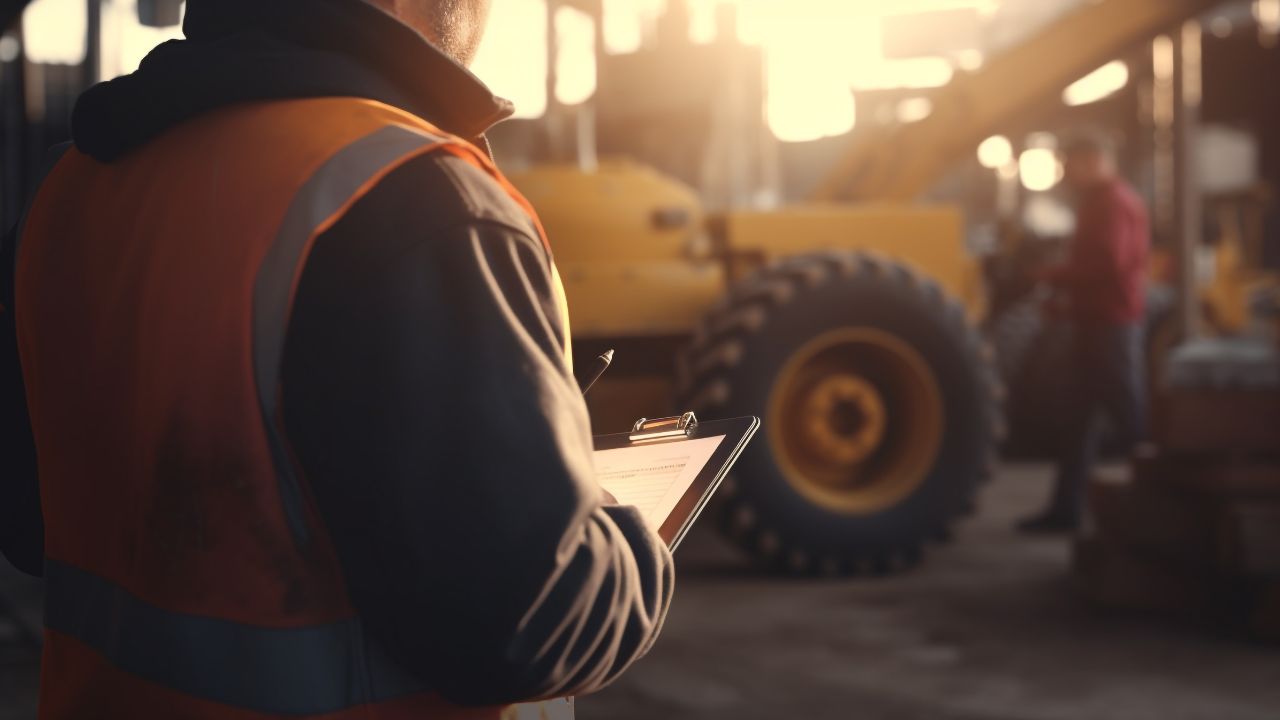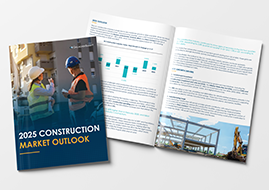
March 4, 2024 — Construction projects are inherently risky, and with the increasing severity and complexity of claims, properly and immediately investigating a claim is crucial to ensuring a fair and timely resolution. To protect the bottom line, immediate investigation by experienced professionals is paramount in controlling the claim from the outset. In this edition of Industry Insights, we provide an overview of the types of investigations used, from initial investigation through trial.
Laying the foundation
Owners, general contractors, construction managers, and their agents may be liable for accidents and injuries on a project site, even without proof of any active negligence. From exposures including slips, trips, and injuries sustained while using power tools and equipment to those involving ladders, scaffolding, or falling objects, maintaining a safe work environment is the employer's responsibility. And unless it can be established that the worker was 100% at fault, defending these claims becomes increasingly more difficult.
Laws surrounding workplace accidents are designed to protect construction workers, so if the claim proceeds to litigation, the defendants — namely the defense counsel — are at a significant disadvantage both statutorily and financially. Even demonstrating that a worker was partially responsible would only result in comparative negligence.
Key steps of a construction investigation
Step 1: Initial Investigation
As a premier global provider of claims and risk management solutions, Gallagher Bassett (GB) has the expertise and team of experienced professionals to support the specialized needs of the construction industry. Part of our service focuses on investigation and each step leading up to and during a trial.
Upon receiving a claim, the first step is to gather information and assess the situation. Immediate response investigative services, with the goal of responding to the site within 60 minutes of notification, are extremely important to control the claim from first notice. We immediately execute the following investigative steps:
- GB's construction investigators gather the facts of the incident, including the location of the loss, mechanics of the loss, claimant pedigree information, employer information, salary, witnesses, and names and locations of initial medical providers to support. The investigators also alert the defense counsel to the incident.
- We take signed, notarized statements from the injured worker, witnesses, the injured worker's foreman and/or supervisor, and anyone in the area of the loss location. It is crucial to obtain negative statements from individuals in the vicinity of an accident who did not witness the incident. These statements exclude these individuals as witnesses and avoid any possibility to encourage these individuals from acting as witnesses moving forward. If the injured worker isn't onsite at the time of the incident investigation, another field investigator will be dispatched and respond to the current location of the injured worker (the hospital, their residence, etc.). Generally, there's a 24-hour window to secure the injured worker's statement before they retain an attorney, at which time we're legally excluded from speaking with the injured worker. The initial statement from the injured worker is crucial for obtaining accurate information to defend the claim, maintaining the facts and true narrative.
- We conduct a scene investigation, including photographs and measurements of the loss location. In certain cases, video will be taken to reenact the mechanics of the claim to determine the validity of the claim.
- We conduct a canvas for surveillance cameras and immediately issue a preservation letter. If footage is available, arrangements will be made in conjunction with the defense counsel to secure the video legally.
- We use a light meter to record the level of lighting at the loss location.
- We direct the proper chain of custody (containing dates, locations, descriptions of the items, signatures, etc.) of the evidence. Evidence identified during our investigation (e.g., ladders, saws, safety glasses, hard hats) will be tagged appropriately. The evidence will be delivered to an off-site location for lock-and-key storage.
- We request records applicable to the loss from the necessary parties and public agencies (medical records, employee records, police reports, etc.).
We provide the steps and results on the date of the investigation via email, identifying any outstanding investigative efforts, additional necessary actions, and risk transfer possibilities. After full investigation of the incident, we provide a comprehensive report. This stage is crucial in determining the validity of the claim and identifying any potential defenses. The site investigation is also important for determining the cause of the claim and identifying any potential liability.
Another popular investigative program, typically for mega projects, is the use of an imbedded investigator that reports to the site daily and investigates all claims. This program eliminates response time and serves as a deterrent for laborers who are considering submitting a manufactured claim. The investigator, when not engaged in an incident, walks the site and records potential safety issues.
Step 2: Desktop investigation
A desktop investigation, specifically a social media search of the injured worker, should be conducted immediately on the date of loss. This search will provide a comprehensive view of the injured worker and any connected parties on all forms of social media. Once the injured worker retains an attorney, the injured worker is generally instructed to delete all social media accounts, therefore, time is of the essence to ensure the capturing of any useful information. The injured worker may post about sports they're involved in, prior injuries, workout regimens, participation in past or future sporting events, and more. In some instances, the injured worker might post highlights and even photographs of the claim. The version of events could differ from what the injured worker reported to the investigator and can then be used to discredit the validity of the claim. The injured worker may also boast in a litigious tone about their employer's financial liability due to the subject incident.
Once a lawsuit is filed, an injury background, through local and national medical and pharmacy sweeps, should be executed. Litigation and criminal searches should be done to form a complete bio of the subject.
If the claim goes to trial, a nationwide comprehensive witness report is recommended. This report will provide a complete professional history of expert witnesses that can be used to verify their credentials prior to deposition or testimony at the trial. This report includes expert witnesses' publications, speaking engagements, business ownership, professional licenses, testimonial history and challenges, jury verdict history with case descriptions, and social media. This report provides the defense counsel with valuable information in order to strategize their approach in court.
Step 3: Surveillance
At different stages of the legal proceedings, surveillance can help determine whether the plaintiff's actions correspond with their injuries. For example, if the plaintiff indicates they're no longer able to participate in certain tasks or daily activities, significant video footage to the contrary will assist greatly in the defense of the claim. Conversely, claims handlers and the defense counsel can use video surveillance as a valuable resource for supporting the alleged injuries or disabilities of the claimant, which can ultimately help resolve the matter.
Unmanned surveillance is an effective tool to track the plaintiff's pattern of behavior. Stationary surveillance units are designed to legally and cautiously secure video to defend the claim appropriately.
Step 4: Trial preparation
If the claim can't be resolved through negotiation or mediation, the case may proceed to trial. Trial prep investigators will review the defense counsel's file and make recommendations as to which records and witnesses should be subpoenaed. Next, the investigators identify the defense's experts and schedule them for testimony. They contact the witnesses and provide their deposition transcript. Additional investigation may be recommended and initiated prior to trial as well. Subpoenas will be prepared and served. The trial prep investigator will monitor the court's subpoenaed records room to ensure that all the records are present prior to trial. Copies of records will be made for the defense counsel to review.
In many cases, we arrange for audio and visual equipment to be on-site at court. The trial prep investigator manages exhibits that need to be blown up for the jury to study, as well as arranging for the insured witness's transportation to and from court if needed. The investigator will also be present for the trial for the defense counsel in case any needs arise during the proceedings. All trial preparation activities that the investigator conducts allow the defense counsel to focus on litigating the case.
Conclusion
There is obviously a significant amount of investigative work to be done throughout the life cycle of a claim to ensure a positive outcome to maintain the client's bottom line. Incomplete investigation can lead to multimillion dollar verdicts or adverse settlements for clients. Verdicts of any size can erode our clients' profitability. And, impacts to loss history can affect our clients' future rates and retentions. It's extremely important to carry out the aforementioned investigative tasks that result in the best defense of our client.
GB Construction
Gallagher Bassett's Construction team provides comprehensive, end-to-end risk management solutions designed specifically for the construction industry. Through claims management and risk control services, we support your projects from pre-construction through closeout.
To learn more about Gallagher Bassett's investigative capabilities for the construction industry, visit our construction industry solutions page.
Make Gallagher Bassett your dependable partner
When making the right decision at the right time is critical to minimize risk for your business, count on Gallagher Bassett's extensive experience and global network to deliver.

